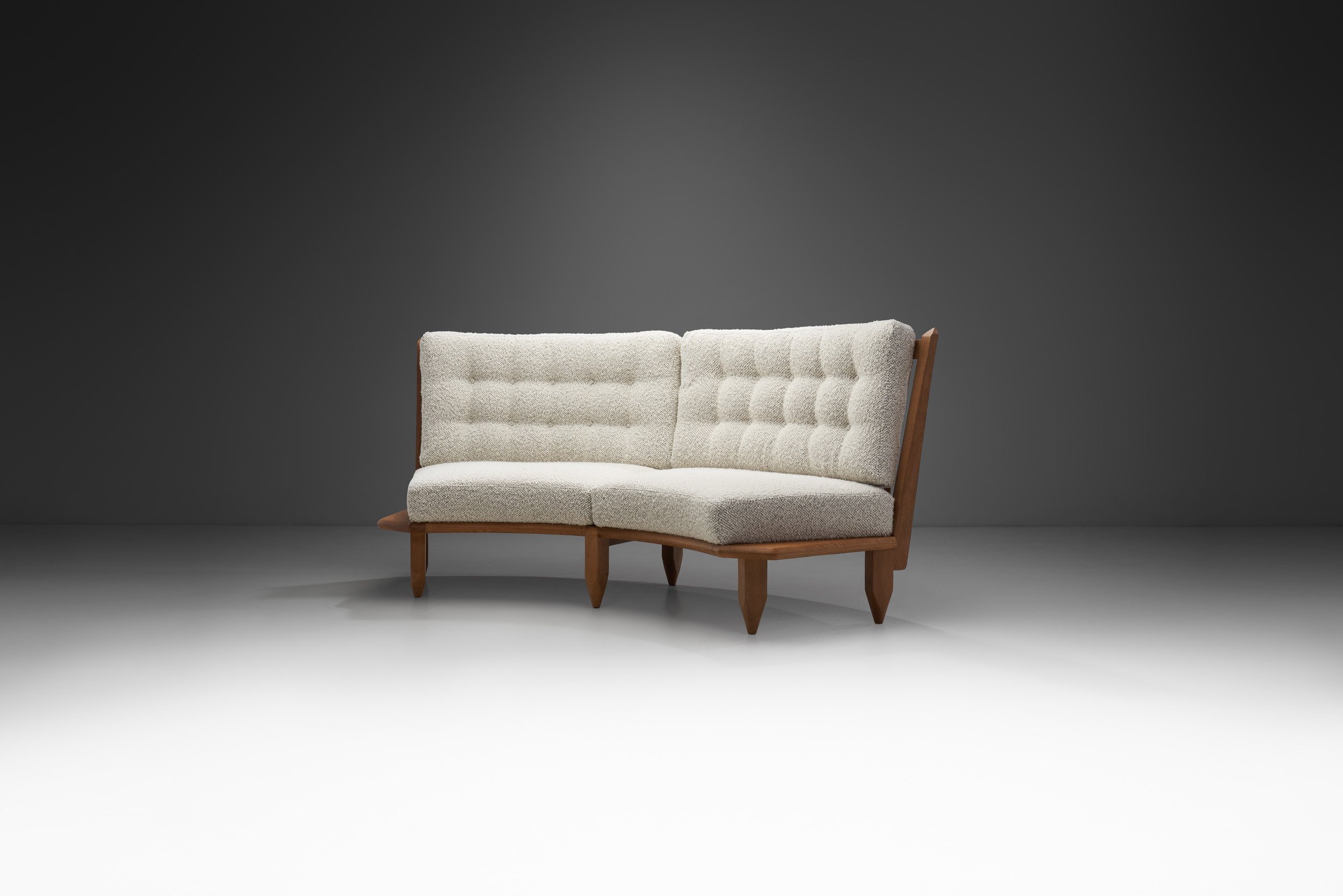Carl Malmsten "Berlin" Three-Seater Sofa, Sweden 1960s














Carl Malmsten "Berlin" Three-Seater Sofa, Sweden 1960s
REQUEST PRICE HERE
Price category: 9,000 - 12,500 usd / eur
The “Berlin” three-seater sofa is “Malmstenesque” to its core. Designed in 1960, this sofa shows the designer’s predilection for traditional Swedish craftsmanship. Rejecting strict functionalism, his models are equipped with a cosy, welcoming aesthetic aided by elegant and clean design.
Carl Malmsten described the home as “an intimate place for gathering and repose,” and his designs seem to elegantly fulfil that purpose. They also possess a timeless stylishness and adaptability that is especially true for the Berlin sofa. This model is a beautifully proportioned and streamlined example of Malmsten’s aesthetic. The body has a large profile with an enveloping back with tight upholstery that highlights the gently rounded lines. The thick and soft seat cushion provides great sitting comfort with straight lines that optically elongate the sofa. The four legs have a traditional tapered form made from solid wood. The simple form allows the body to stay in focus. The Berlin three-seater sofa is the larger version of the “New Berlin” model designed in 1958, and wasn’t produced in great numbers making it very rare. Furthermore, unlike its smaller cousin, this model hasn’t been reissued.
The dedication and passion for Swedish design have earned Carl Malmsten, alongside Bruno Mathsson and Yngve Ekström, the title of one of Sweden's best-known furniture designers. This three-seater Berlin sofa makes it easy to see why.
Condition:
In good vintage condition. Wear consistent with age and use. The sofa has been reupholstered in a premium fabric. Each of our items can be re-upholstered by our in-house atelier in a fabric of choice. Please reach out for more information.
Dimensions:
74.8 in W x 29.52 in D x 30.51 in H; Seat height 15.35 in; Arm height 26.96 in
190 cm W x 75 cm D x 77.5 cm H; Seat height 39 cm; Arm height 68.5 cm
About the designer:
Carl Malmsten (December 7, 1888 – August 13, 1972) was a Swedish furniture designer, architect, and educator. Malmsten was born in Stockholm, Sweden. Malmsten's career took off when he won a competition in 1916 to design furniture for the Stockholm City Hall and shortly after, in 1917, he exhibited alongside well-known Swedish architects such as Gunnar Asplund and Uno Åhrén.
In the 1920s he was invited to furnish a room for the crown prince, Gustaf VI Adolf, and his wife Louise in Ulriksdal Palace. He was honoured with an inaugural Prince Eugen Medal for design in 1945. Already as a young designer in the early 20th century, Carl Malmsten advocated an artisanal furniture design based on local ingredients and traditions, available to a wide audience at a reasonable price.
Nature was Carl Malmsten's foremost teacher and source of inspiration. He conveyed his love of craftsmanship as a teacher in his own schools, at Olofskolan in Stockholm, Capellagården on Öland and the Carl Malmsten school on Lidingö, today a branch of Linköping University and one of the country's leading design colleges. As a debater, Malmsten stormed against functionalism, but in retrospect it can be seen that his ideas often coincided with the rational and frugal style ideals of function.
Malmsten has had a lasting influence on Swedish furniture design through the two schools he founded—the Carl Malmsten Furniture Studies (Carl Malmstensskolan), which has been a part of Linköping University since 2000, is situated on the island of Lidingö on the outskirts of Stockholm. Carl Malmsten spoke about the importance of tradition, craftsmanship and the nation. His furniture was in many ways a product of the thoughts and ideals of the time, they have a timeless quality that makes them just as relevant and loved today. ~H.












